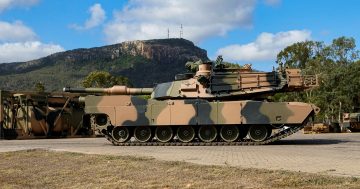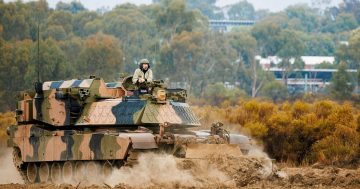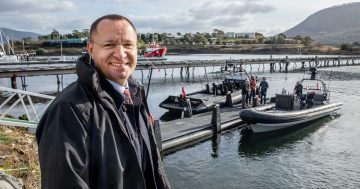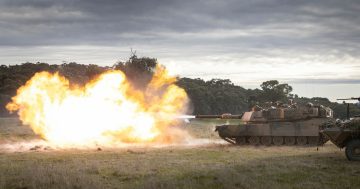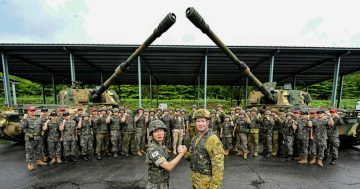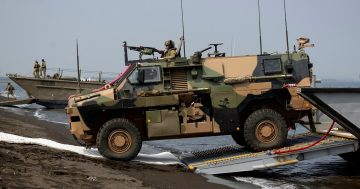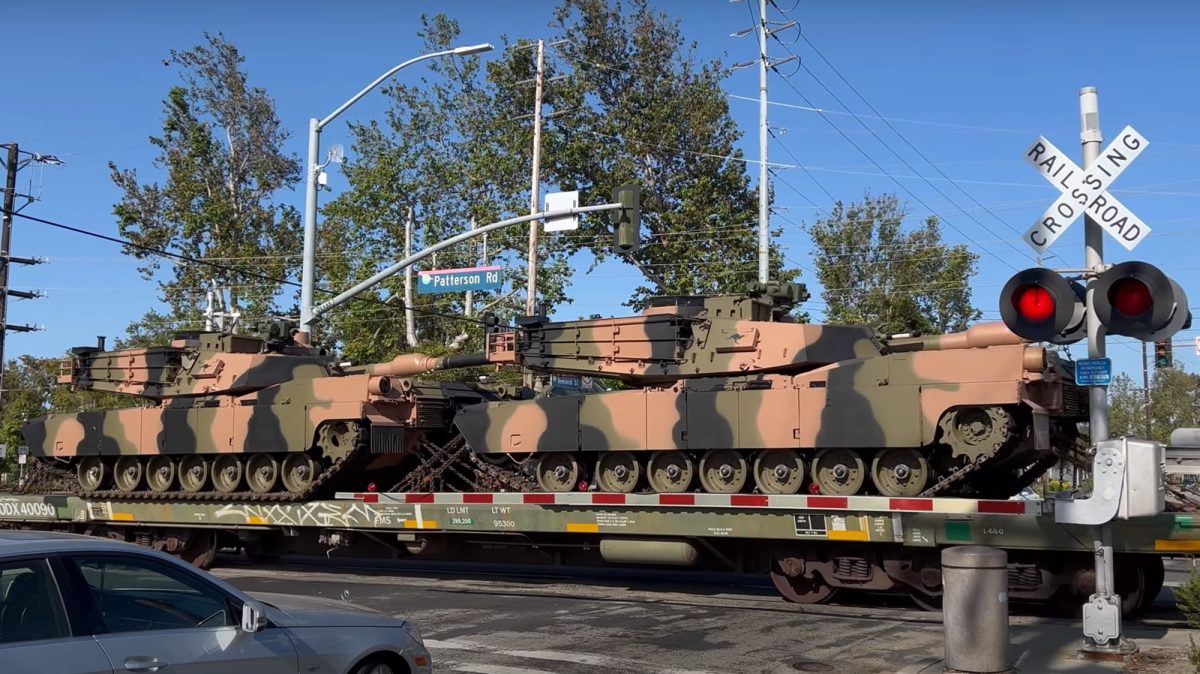
Australian Army-bound M1A2SEPv3 Abrams tanks seen on a train headed to a Californian port recently. Photo: Screenshot.
Trade magazine Defence Technology Review has reported that the first batch of new M1A2 Abrams main battle tanks (MBT) for the Australian Army were spotted recently in California being transported to a port for shipping to Australia.
The M1A2SEPv3 Abrams tanks are part of an order for 75 such vehicles placed in December 2021 under Project LAND 907 Phase 2 to replace the army’s 59 current M1A1 Abrams, which have been in service for about two decades.
The tanks are built by General Dynamics Land Systems at the US Government-owned Joint Systems Manufacturing Center – also known as the Lima Army Tank Plant (LATP) – in Lima, Ohio. The plant hasn’t built any new tank hulls for a couple of decades, and instead remanufactures old M1A1 tanks into the newer versions by adding new sensors, armaments and communications.
The M1A2 SEPv3s (Systems Enhancement Package) entered service with the US Army in 2020. Improvements over the M1A1 include the addition of the KONGSBERG Common Remotely Operated Weapon Station Low Profile (CROWS-LP) and an auxiliary power unit with increased power generation.
Other enhancements include advanced sensor and communications displays, a new vehicle health management system (VHMS), missile-detection systems, added ballistic protection and advanced armour, and an improved forward-looking infrared (FLIR) sensor.
The army’s current M1A1s have never been operationally deployed, but have provided a training capability for Australian ‘’tankers’’ should they be used in operations to operate pre-positioned US or NATO MBTs.
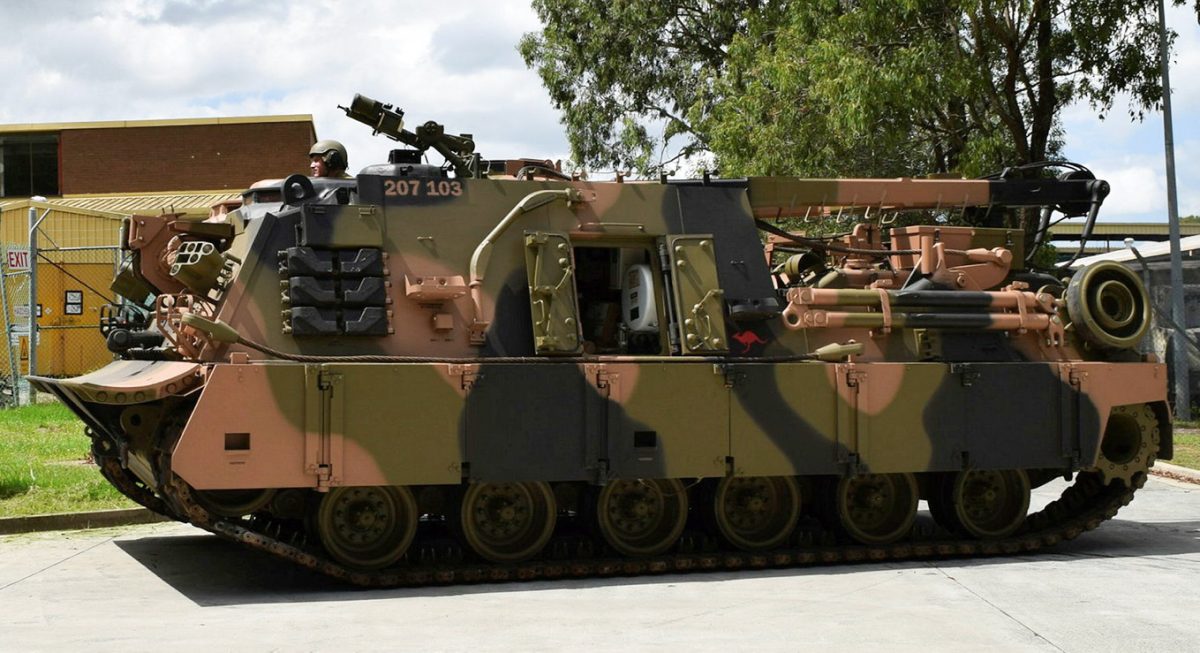
The M88A2 Hercules recovery vehicle uses an Abrams chassis and is fitted with a crane. Photo: ADF.
The Abrams tanks are part of a larger order under the accompanying LAND 8160 Phase 1 Combat Engineering Vehicles requirement, which will also see 52 Abrams-based armoured engineering and support vehicles acquired.
These include six more M88A2 Hercules recovery vehicles, 29 M1150 Assault Breacher vehicles, and 17 M1074 joint assault bridge systems (JABS).
The M88A2 is a crane-equipped heavy recovery vehicle able to recover damaged or broken-down armoured vehicles under fire, and for supporting field maintenance.
The M1150 is a dedicated mine and explosives-clearing vehicle and is equipped with a mine plow and a Linear Demolition Charge System (LDCS) – a rocket-powered system that deploys a line of small charges ahead of the vehicle for clearing a path through a minefield.
The M1074 JABS was designed by Italian firm Leonardo and can carry, deploy, and recover a folding bridge capable of fording gaps of more than 11 metres and supporting the weight of a fully loaded MBT.
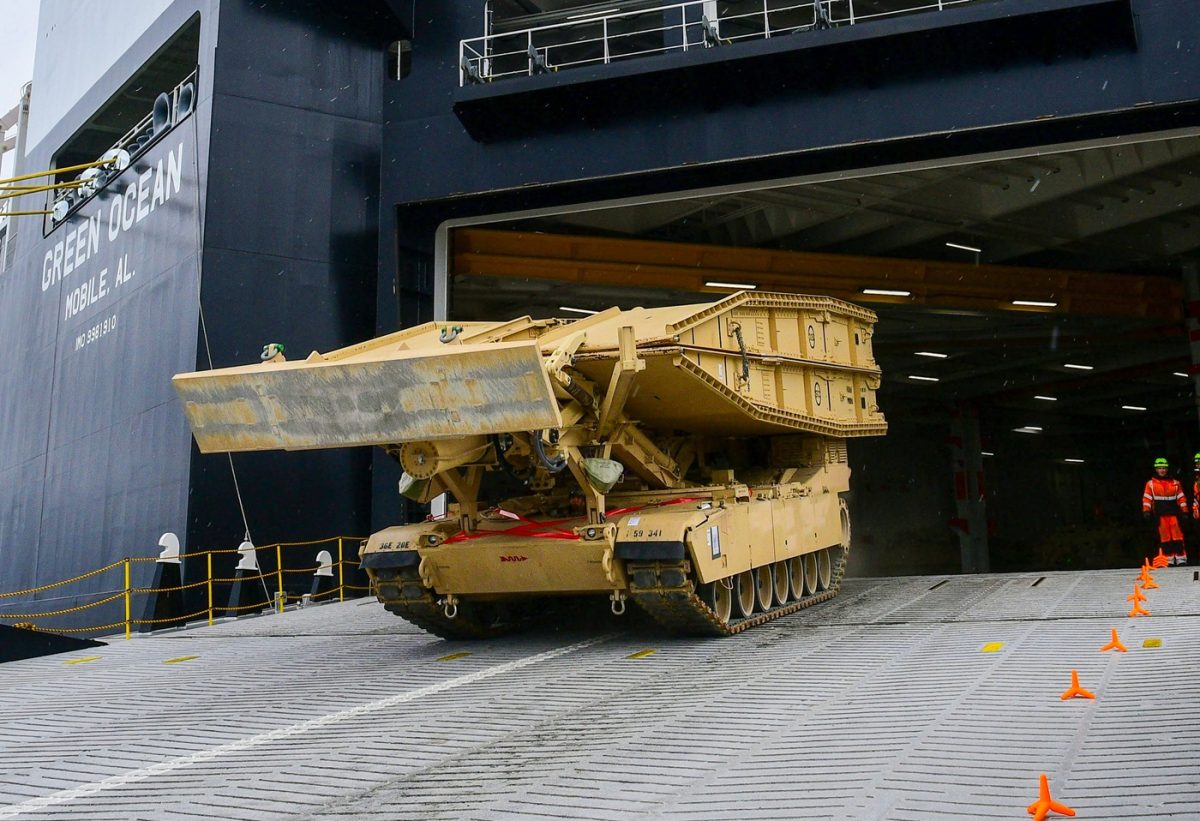
The M1074 JABS carries a self-deploying bridge that can ford obstacles and support the weight of an MBT. Photo: US Army.
All of these vehicles use the same chassis and Honeywell AGT1500 gas turbine engine as the Abrams, but provide different engineering solutions to the army.
The cost of all 127 armoured vehicles is expected to exceed $3.5 billion.
The acquisition of newer and additional MBTs has been questioned by some defence analysts in light of the Australian Army’s moves to become more mobile, develop its amphibious capabilities, and add long-range fires capabilities to its ranks.
Just one 75-tonne M1A2 can be carried at a time by the RAAF’s largest C-17A transport, although the vehicles can also be embarked upon and deployed from the navy’s two Canberra-class LHDs and associated landing craft.
The armoured vehicles will also be able to be deployed from the army’s new Birdon landing craft being acquired through Project LAND 8710 Phase 1A Littoral Manoeuvre Vessel – Medium (LMV-M), and a follow-on class of even-heavier LMV-H vessels.


